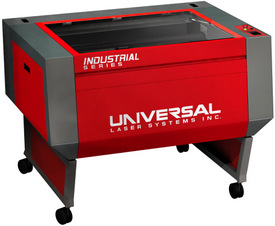The most popular laser variants for material processing, such as laser cutting, laser engraving, or laser marking, are CO2 and fibre lasers. This review covers the materials that are suitable for CO2 and fibre lasers with power levels less than 200 watts. It also provides tools to assist you in determining the ideal Universal Laser Service for your needs.
CO2 Laser Processing Materials
A CO2 laser with a power output of less than 200 watts is typically used to treat organic materials, although it may also be used to process inorganic, non-metallic materials. CO2 universal laser engraver at this power levels can mark some metals if they have a high enough laser energy capacity attained via the use of specific optics. CO2 lasers are used for the following processes and materials:

CO2 Marking/Engraving and Cutting
Many organic materials have a practical maximum thickness restriction of.125 inch (3.2mm) to 1.0 inch (25.4mm) when cut with 150 watts or less. The limit varies a lot depending on the density and composition of the substance. Low-density foam materials with a thickness of up to 2.0 inches (50.8mm) can also be cut. The quantity of applied laser energy has a significant impact on the maximum depth for cutting and processing speed, hence greater power (75–150 watts) is suggested for cutting thicker material or for increased productivity.
CO2 laser engraving is possible with the following materials:
- Plastics
- Rubbers
- Elastomers
- Foams
- Fabrics
- Papers
- Composite Woods
Fiber Laser Processing Materials
Fiber universal laser service with a power rating of 100 watts or less are generally used to mark and engrave metal products. Fiber lasers absorb metal significantly more efficiently than CO2 lasers due to their lower wavelength. Fiber lasers with steel have the ability to mark a wider range of metals, penetrate below the metal’s surface, and mark/engrave quicker than CO2 lasers of comparable power. Fiber lasers are often used to mark the surface of some polymers with additives that absorb and respond to the fibre laser energy.
Conclusion
In conclusion, your decision on which laser or lasers to use is largely influenced by your processing needs. Consider all of the materials that are significant to you today and in the future before settling on a configuration.
